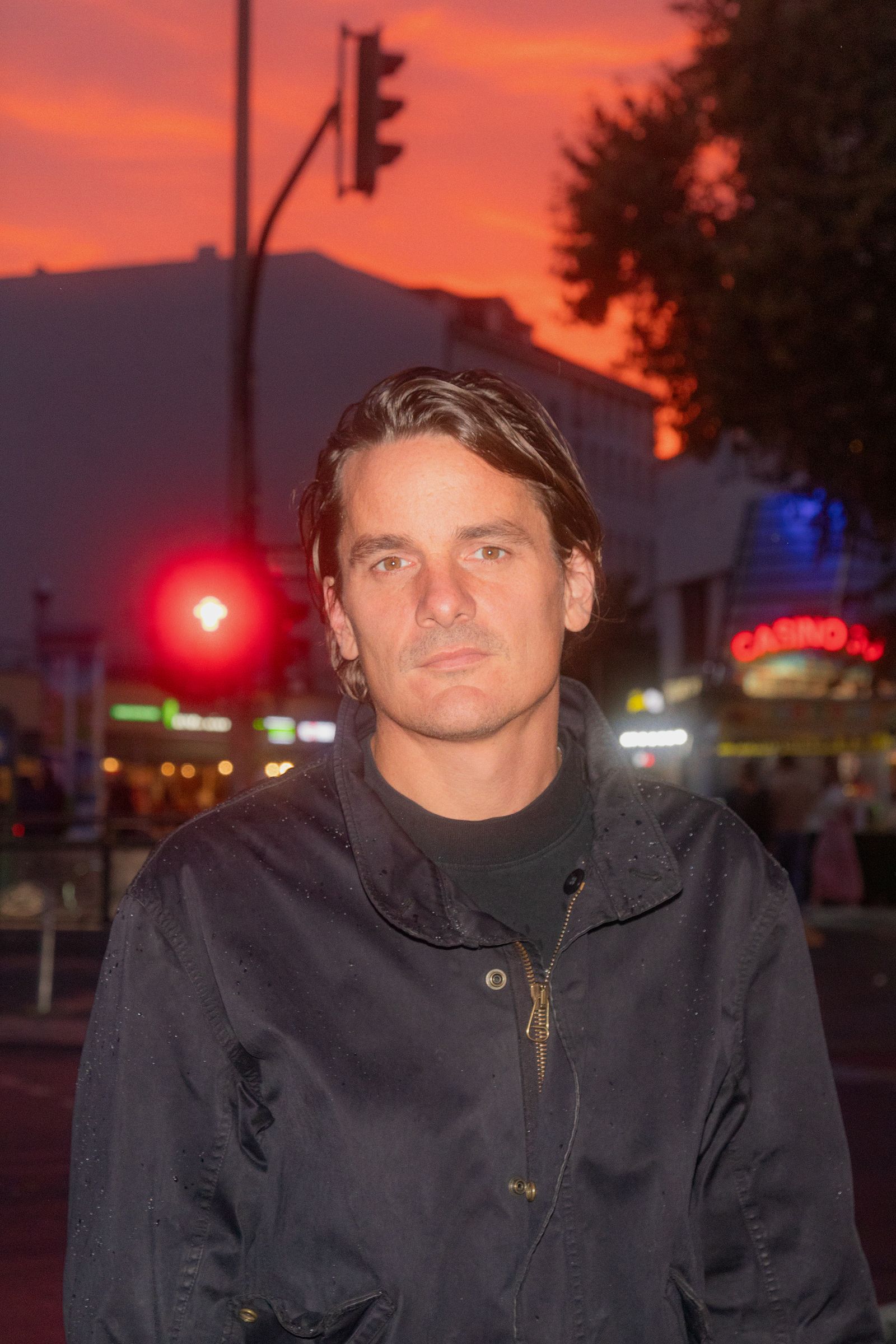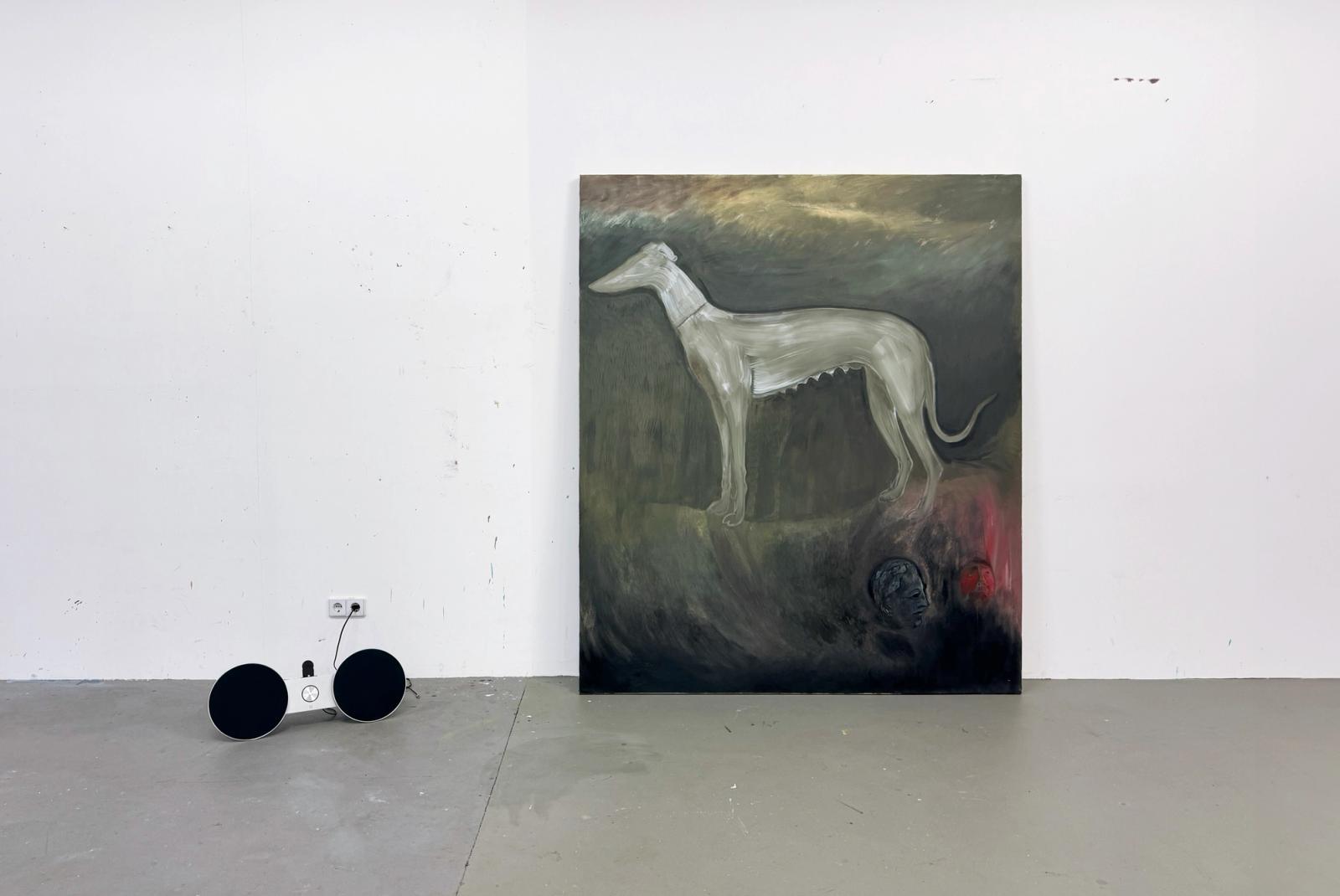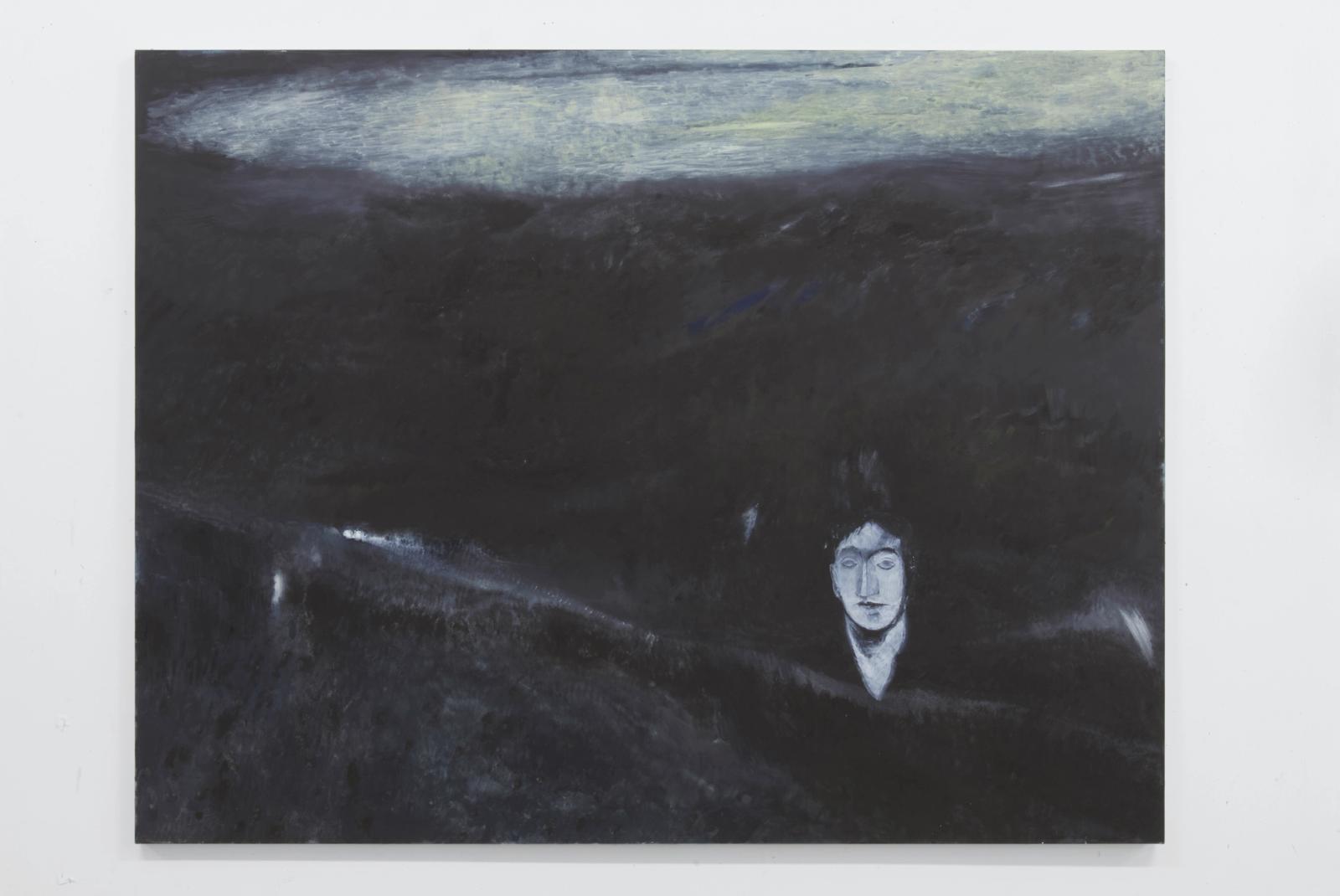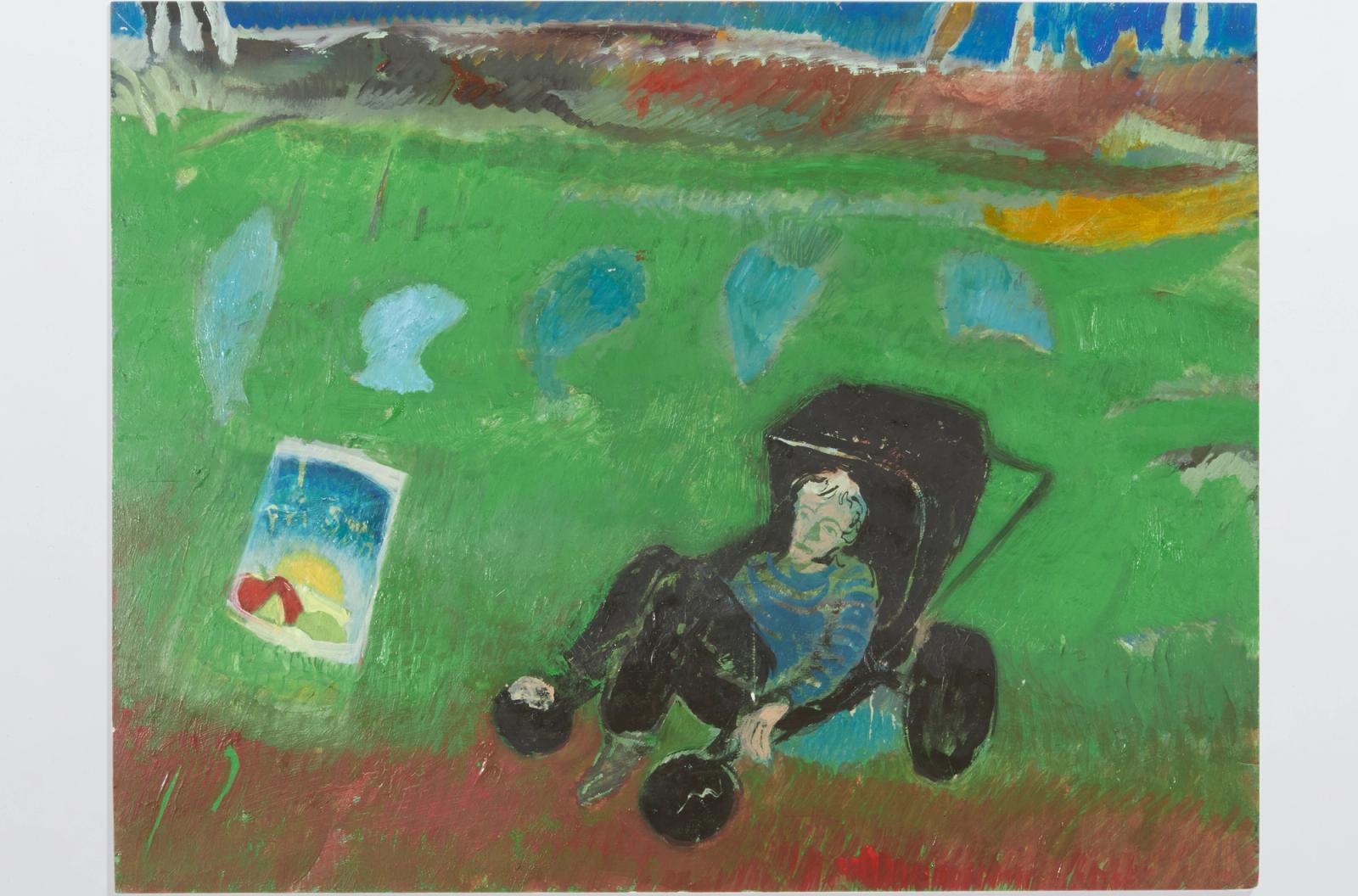Filip Henin

Artist-in-Residence
05.–08.2024
A child sits in a stroller with a discarded Capri-Sun. Skeletons smoke in open fields. Figures recline against alpine landscapes. Faceless greyhounds dart through scenes framed by moving aeroplanes and dimly lit cars. These recurring motifs in Filip Henin’s oil paintings reflect situations that seem to draw from life, but transform into something darker and more introspective. This imagery –which can appear mundane at first glance– carries a deeply haunting quality, where everyday moments are infused with a mysterious energy. The figures and landscapes blend into vast, turbulent backgrounds, suggesting transitions, memories, and liminal spaces.
Though Henin’s early artistic pursuits revolved around drawing, his initial dream was to become a mathematician. For him, the logic of mathematics and the process of making art share a meticulous yet fluid approach— working through iterations, making and erasing mistakes, always searching for something precise yet elusive. This is reflected in his paintings, where oil is layered, rubbed away, and overpainted, leaving behind traces of earlier versions that add depth to the final composition.
Retaining the spontaneity of his early days working with graphite and paper, the artists works present themselves across an array of materials, reclaimed wood panels, or dead-stock canvas, which is sometimes threadbare and patterned. The surface becomes a carrier for his figures, often floating in broad, expansive scenes. These isolated and awkward protagonists echo haunted spirits or fragments of memories. Much of this narrative is deeply connected to movement and travel, rooted in Henin's childhood spent on long car journeys with his family. This sense of transition, of being in between places, continually permeates his work, as the figures seem caught in a state of liminality, between one world and another.
Moments of transition, for Henin, act as spiritual passageways. While it would be straightforward for us to relate these ideas to the threshold between life and death—there’s a deeper exploration taking place, a place where certainty ends, and the unknown begins. Here, myths and stories take hold, and Henin draws from historical symbols and mythological signs, grounding his figures in a larger narrative of human existence. His displaced protagonists, often camouflaged by their surroundings, appear to hover between worlds, suspended in flux.
The titles of Henin’s works often offer no direct correlation to the imagery. If You Ask presents a landscape with a whirling road leading up to a dense forest of pointed pines, their tall forms adding a sense of foreboding, framing a dimly lit car. In contrast, Die Nachbarn (or The Neighbours) depicts a floating head against a yellow backdrop, with a large spider looming above the ground. Another work, He Knew That It Was Mine, depicts a large white-grey female whippet, alert yet submissive, her tail down, poised to leap at the next command. Below her hind legs, two male portraits are positioned at the canvas's edge, their gazes averted. This arrangement seems to extend beyond the frame’s boundaries, inviting viewers to imagine the story continuing outside the four corners of the painting.
Emotionally rich and deeply personal, much of Henin’s practise resonates with his own experiences. The works play with varying degrees of humour or existential melancholy, reflective of the solitude of his studio practice. His characters, locked in a place with no beginning or end are suspended in different realms, never fully at home within the space they occupy.
Henin’s engagement with landscapes amplifies this sense of isolation. Using turpentine to thin his paint, he creates ethereal, washy layers, where backgrounds bleed and blur, mirroring the instability of nature. The ever-shifting weather and the passage of seasons are captured through the intensity of his brushstrokes, which vary in rhythm and pressure, contrasting the stillness of his figures with the turbulence of the world they inhabit. Describing his paintings as ‘film stills in motion,’ capturing a sense of immediacy and lingering introspection. The urgency in his technique, reminiscent of his works on paper, adds tension, even as each piece remains carefully considered.
The relationship and influence of film to Henin’s work is also interesting on several levels. Not least, in the pursuit of paradoxical concepts, or the recording of unprompted acts—works by Werner Herzog or Alexander Kluge are just as relevant, as the many art historical leanings to be found in Henin’s works.
Though originating from personal experience, Henin’s paintings carry universal resonance. His constructs evoke a shared sense of displacement and longing for a place to belong in an ever-changing world. There’s an honesty in his process—the visible traces of earlier ideas are a testament to the labour and thought behind each piece. Layers of paint and the remnants of past attempts reflect the ongoing negotiation between where we’ve come from, where we’re headed, and the forces that shape us. In Henin’s work, as in life, nothing is fixed; it is within these transitional moments that meaning is uncovered.
Text by Sofia Hallström Portrait by Neven Allgeier




